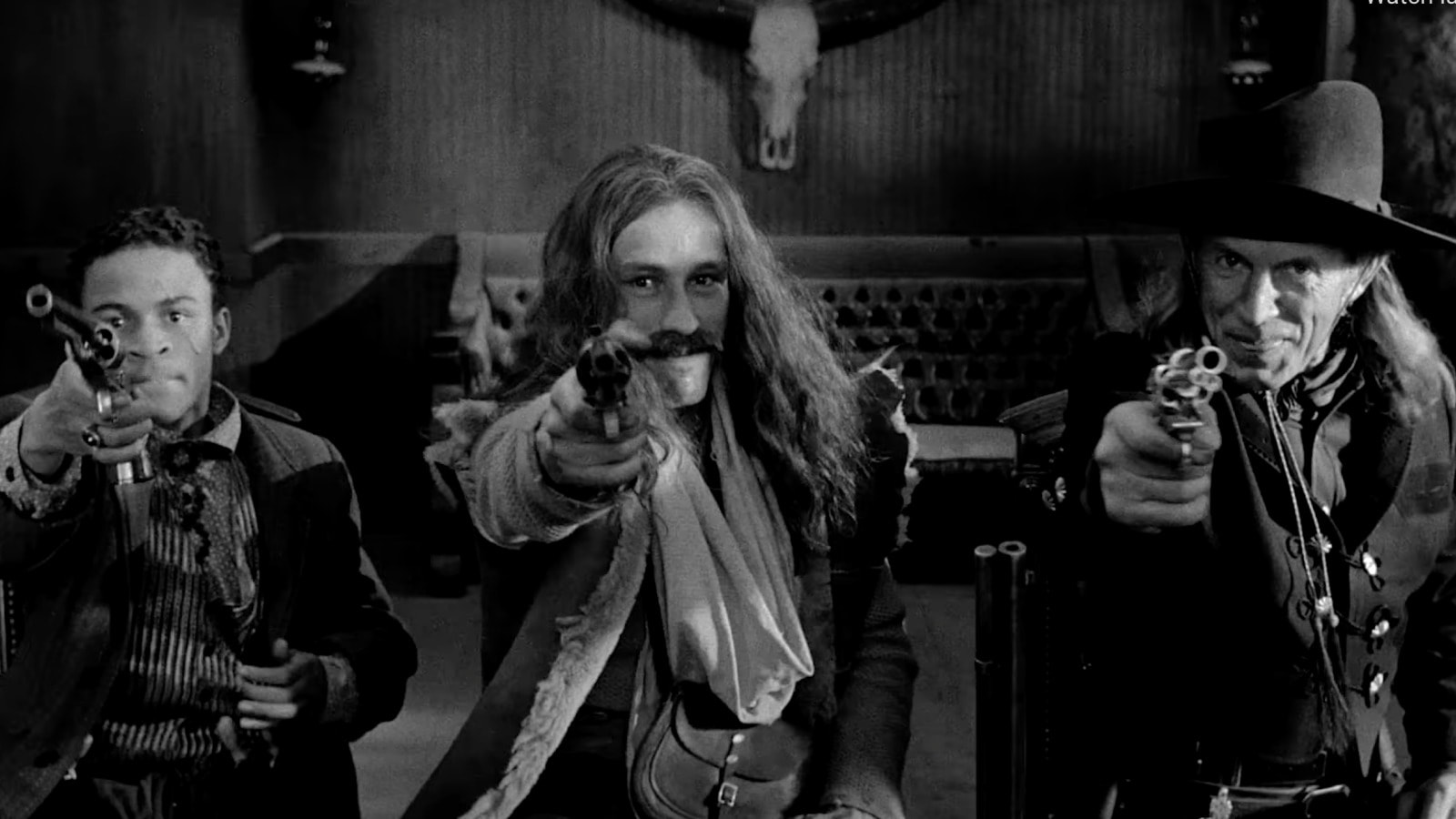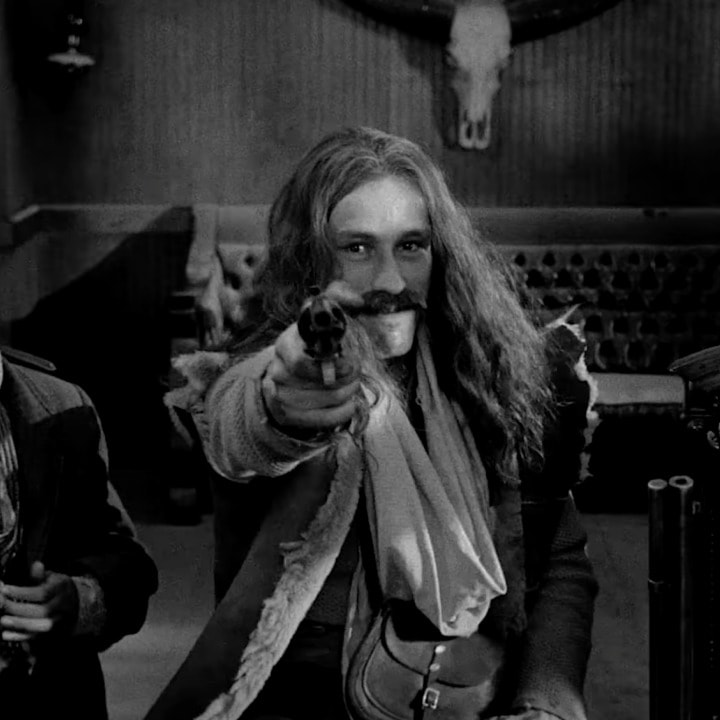A landmark Western by Jim Jarmusch, Dead Man is an eerie black-and-white movie about death in the Wild West.
William Blake (Johnny Depp) is a young accountant from Cleveland who travels to the frontier city of Machine to take on a new job. A series of fateful misunderstandings turn him into a killer, and he goes on the run. After he meets an Indian named Nobody, who mistakes him for the resurrected spirit of his namesake, the British poet, William sets out on a journey to the endless sea.
Jarmusch immerses both Blake and the viewer in an alternative universe, the air of which is permeated with Neil Young’s viscous guitar riffs and where everything weird and distorted seems natural. Mysterious bleached faces hiding in a grove, a monumental totem pole that looks like a rocket or a portal transporting people to other worlds, the transformation of the hero’s face, which begins to be covered with a pattern and turns into a skull in the eyes of the Indian Nobody—despite all the surrealism and absurdity, everything has an almost unconditional authenticity.
Dead Man has been interpreted in various ways since its release. What exactly did Jarmusch do to the Western, an iconic film genre? He transformed it into a mysterious road movie, a ballad of the era of romanticism, while simultaneously creating a post-Western with an anti-masculine loser hero who finds a friend in an Indian and calmly embarks on a journey toward his own death.
The film will be screened in English with Russian subtitles.
Dead Man
Dir. Jim Jarmusch
USA, Germany, Japan, 1995. 121 min. 18+

